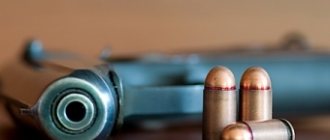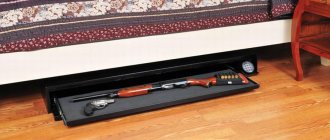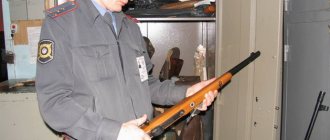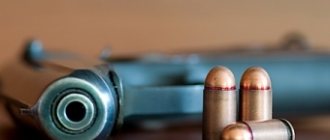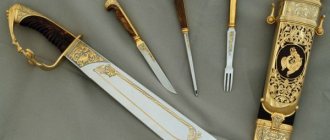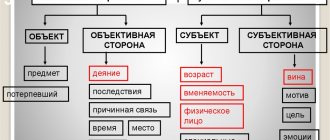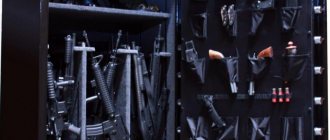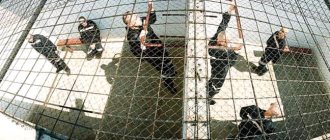A gun safe is a prerequisite for purchasing and owning a firearm. According to current legislation, weapons and ammunition belonging to citizens must be stored at their place of residence, in locked safes and gun cabinets. Buying a gun safe is not difficult; you can find many models of gun safes of various sizes, appearance and price levels on sale. When choosing a safe, the future gun owner has many questions about what size the safe should be, how thick the metal of the safe should be, how many and what kind of locks it should have, and whether the safe should be attached to the wall and floor. We will try to answer all these questions in our publication. Many future gun owners are interested in the question of the best manufacturers of gun safes and their best models. For them, we present our ranking of the best gun safes.
Gun Safe Legislation
Legislative requirements for storing weapons are established in our country by three pieces of legislation:
- Federal Law of December 13, 1996 N 150-FZ “On Weapons”
- Decree of the Government of the Russian Federation of July 21, 1998 N 814
- Order of the Ministry of Internal Affairs of April 12, 1999 N 288
Article 22 Storage of civilian and service weapons and ammunition for them Federal Law> dated December 13, 1996 N 150-FZ “On Weapons”: “Civilian and service weapons must be stored in conditions that ensure their safety, security of storage and exclude access to them by unauthorized persons . Requirements for storage conditions for various types of civilian and service weapons and cartridges for them, as well as initiating and flammable substances and materials (gunpowder, primers) for self-loading cartridges for civilian long-barreled firearms are determined by the Government of the Russian Federation.”
Comprehensive requirements for citizens are described in paragraph 59 of Government Decree No. 814 of July 21, 1998: “Weapons and cartridges belonging to citizens of the Russian Federation, as well as initiating and flammable substances and materials (gunpowder, primers) for self-loading cartridges for civilian long-barreled firearms must be stored at their place of residence, subject to conditions ensuring their safety, safe storage and excluding access to unauthorized persons, in locked safes, safe cabinets or metal cabinets for storing weapons, boxes made of high-strength materials or in wooden boxes, upholstered iron. The Federal Service of the National Guard Troops of the Russian Federation, its territorial bodies, internal affairs bodies at the place of residence (stay) of the owners have the right to check the storage conditions of registered weapons. The storage of weapons, cartridges, as well as initiating and flammable substances and materials (gunpowder, primers) for self-loading cartridges for civilian long-barreled firearms by citizens of the Russian Federation in places of temporary stay must be carried out in compliance with conditions that exclude access to them by unauthorized persons. Citizens of the Russian Federation who are members of sports shooting societies and clubs may store weapons and ammunition that belong to them at sports shooting facilities at the site of shooting training and competitions.”
Paragraph 162 of the Order of the Ministry of Internal Affairs of April 12, 1999 N 288
: “Citizens of the Russian Federation must store weapons and ammunition that belong to them at their place of residence in locked safes or metal cabinets, boxes made of high-strength materials or in wooden boxes lined with iron in compliance with conditions that ensure the safety of weapons and ammunition, the safety of their storage and exclude access to them by unauthorized persons. Citizens of the Russian Federation who legally have weapons and ammunition may store them in places of temporary stay subject to conditions that ensure their safety.”
Thus, the legislation establishes the following requirements for citizens to store their weapons:
- Citizens are required to store weapons at their place of residence. Place of residence is the place of permanent or primary residence of a citizen as the direct owner, or a close relative of the owner, or under a social or commercial lease agreement
- In metal safes, boxes, gun cabinets or wooden boxes covered with iron, locked with a padlock(s)
- Prevent access to weapons by unauthorized persons
There are no requirements in the legislation regulating the storage of weapons by citizens:
- About screwing the safe to the wall
- About the minimum thickness of safe walls
- About the number and types of locks
- On separate storage of weapons and ammunition
- About installing alarms and bars on windows
- About the requirements for installing a safe in the premises
- On storing weapons at the place of registration, and not at the place of residence
Requirements for a gun safe: installation conditions, dimensions, technical characteristics
general information
The regulatory and legal documentation of the Russian Federation acts as a fulcrum. Requirements for a gun safe for individuals are regulated in order of priority by the Law “On Weapons” No. 150-FZ, government decree and order of the Ministry of Internal Affairs. It is prescribed that firearms must be kept locked. You can use safes or metal boxes.
They must ensure the safety of weapons and ammunition used by them, the safety of their storage and prevent unauthorized persons from accessing them. This applies to all types of firearms - traumatic, smooth-bore and rifled. There are no special requests provided.
Therefore, if you are interested in the requirements for a gun safe for smooth-bore weapons, then you need to know that this issue is not considered from this position. It is worth mentioning separately about hunting bladed weapons.
It is designed to defeat animals using human muscle power. Consists of a handle and blade. Typical varieties are knives, hunting cleavers and daggers. The same documents deal with regulatory issues, so the rules are no different - they should be kept under lock and key and not allowed to unauthorized persons.
Safe and torment of choice
From the point of view of current legislation, it must be made of metal and be locked. This is the required minimum. But the law does not prohibit taking additional measures to ensure the safety of one’s own property, which includes weapons.
For example, a burglar-resistant entrance door can be installed, and the property can also be connected to a 24-hour security console. But still, the most important point is the safe itself.
What does the ideal gun safe look like?
In short, the answer to this question is:
- Size is important. Care must be taken to ensure that the weapon fits freely in the safe when assembled. It is quite possible to store it disassembled, but this is inconvenient. Therefore, it is necessary to select storage based on the length of the largest gun. Fortunately, when choosing a specific item from the entire variety of nomenclature, you can always focus on quantity and size. The safe should be taken with a small margin. This will come in handy if you purchase a pair of barrels. After all, arsenals tend to increase over time. If a weapon with optics is used, the depth must be at least 35 centimeters.
- Separate storage. Separately storing weapons and ammunition is practical and safe. In this case, a lockable cartridge compartment (trazer) is provided. It should be noted that in some models this addition formally exists, but in practice little can be placed there. It is necessary to adequately assess the level of needs and select a sufficiently spacious cartridge compartment.
Of course, the requirements of the Ministry of Internal Affairs for gun safes do not provide for all this, but you need to think not only about the servicemen, but also about your convenience, right?
Selecting the best option
In addition to the points discussed above, you should also pay attention to:
- Mounting guns in a safe. Cradles are provided for this purpose. They can be roller clamp type or wooden. The first option is considered more convenient. After all, roller clamping type supports can be installed arbitrarily to the required height individually for each barrel, taking into account its length. If the safe does not have such devices, then you need to check with the seller whether they can be purchased additionally. They are inexpensive, but very convenient. After all, thanks to them, the weapons do not fall into a heap.
- Metal thickness. Everything is simple here - the more, the better. Although you shouldn't imagine a real bank vault. The maximum thickness is 5 millimeters. It is rarely used and, as a rule, only to strengthen the structure, or more precisely, the front door slab. Safes with a thickness of three millimeters are considered reliable. For inexpensive items, sheets 2 mm thick are used. To protect yourself, it is better to use safes made of three-millimeter steel. But if your budget is limited, then you should choose a two-millimeter product from the same material. It is better not to consider less. Although thinner storage devices have an attractive price, it is better not to count on their burglary resistance. People often call them “the policeman’s closet.” That is, their main purpose is to comply with formalities and everything.
About castles
The requirements for a gun safe stipulate that it must be locked. From a formal point of view, the number of locks does not matter. The preference for a particular type is left to the discretion of the future owner. You must select a combination electronic or key lock.
The former are more expensive and work with batteries. Like any electronics, they are demanding in terms of operating conditions. It should be noted that there is significant functionality.
As such, you can consider changing the code combination, protection against code selection, indication of the battery charge level, audit of openings and much more. If your budget allows and there are children in the house, it is better to choose this option. Although the key lock is more popular.
This is due to ease of use, durability, reliability and low price. The only drawback here is that you must keep the keys with you.
What about the fastening?
A very common question is the requirement of the local police officer to secure the safe. And is this legal? On the one hand, specific requirements for installing a gun safe at home are not specified in any regulatory documents.
On the other hand, anchoring a safe, which can be safely removed from the home along with all its contents, is a very good security measure. You can butt heads with the local police officer or just screw on the safe. You need to do this primarily for yourself, and not for a person in uniform. It takes a little time.
If security issues are not a simple formality, then it is better to fix it. Although the requirements for installing gun safes do not provide for this, as they say, God protects the careful.
Why is a safe needed and all these security requirements?
Many people believe that this is all just bureaucratic fuss. Therefore, in order to avoid the desire to approach the matter of choosing carelessly, it is necessary to consider why such requirements for a gun safe were introduced.
The fact is that legal weapons are practically not used in criminal activities. For example, the number of murders of people using it is only a few dozen per year.
Now compare with the general figures of thousands of deaths from criminal activity. All this is done with illegal weapons. How does it acquire such status? As a rule, the loss or theft of a completely legal firearm “helps” with this.
Checking the storage conditions of weapons by the district police officer
The district police officer checks the conditions for storing weapons when a citizen first purchases a weapon and receives a license to purchase a weapon, or the citizen is already the owner of a weapon and renews a weapons permit.
In addition, the district police officer has the right to conduct unscheduled inspections of the storage conditions of weapons. However, such inspections can occur no more than once a year, and the employee must agree on the date and time of the inspection in advance.
Based on the results of the inspection, the district police officer draws up an inspection report on the conditions of storage of weapons.
When checking the conditions for storing weapons and drawing up a report, the district police officer may put forward requirements for the safe that are not provided for by current legislation. The requirement to attach the safe to the wall or floor, although not spelled out in the law, is quite reasonable. A safe secured to the wall and floor is much more stable, it will not wobble and fall on someone in your household, and intruders will not be able to simply take it out of your home.
Sometimes local police officers can put forward completely unreasonable demands and not prescribed by law. For example: they require the purchase of a separate safe for storing cartridges, when there is a special compartment for cartridges in the safe, or they require alarming and arming the apartment, etc. In this case, you should write a complaint about the actions of the local police officer to the police department or demand a written refusal from him, and then file a complaint with the prosecutor’s office. In most cases, the district police officer will not aggravate the situation and will stop putting forward demands that are not established by law.
Responsibility for violating the rules for storing weapons
The law provides for administrative and criminal liability for violation of the rules for storing weapons.
In accordance with Article 20.8 Part 4 of the Code of Administrative Offenses of the Russian Federation Violation of the rules for storing, carrying or destroying weapons and ammunition for them by citizens
shall entail the imposition of an administrative fine in the amount of five hundred to two thousand rubles or deprivation of the right to acquire and store or store and carry weapons for a period of six months to one year.
In addition, there is Article 224 of the Criminal Code of the Russian Federation . Careless storage of a firearm that created conditions for its use by another person, if this resulted in the death of a person or other serious consequences
, - is punishable by a fine in the amount of up to one hundred thousand rubles, or in the amount of the wages or other income of the convicted person for a period of up to six months, or by compulsory labor for a term of up to three hundred and sixty hours, or by corrective labor for a term of up to one year, or by restriction of freedom for a term of up to one year, or arrest for a term of up to six months. The same act, resulting in the death of two or more persons, is punishable by compulsory labor for a term of up to four hundred eighty hours, or correctional labor for a term of up to two years, or imprisonment for a term of up to two years.
Carrying and transporting weapons
The carrying and transportation of hunting or other weapons and ammunition are subject to even more stringent requirements than their storage.
The main restrictions are presented below:
- Carrying hunting weapons is allowed only in special hunting grounds;
- Carrying a weapon for self-defense is allowed only in a holster with the safety catch on;
- Carrying weapons at public events is prohibited;
- It is prohibited for a person under the influence to carry a firearm;
- It is prohibited to fire weapons in areas not designated for this purpose;
- When carrying a weapon, you must have a passport and a license with you.
In order to transport weapons, you must obtain a special permit valid for no more than 1 month.
The following types of weapons can be transported without a permit:
- Not subject to registration;
- Firearms for self-defense without the right to carry;
- Hunting and sporting weapons when transported to a hunting or competition site;
- Which moves within the subject of the Russian Federation where it is registered.
Types of safes for storing weapons
All safes for storing weapons are divided into two types, depending on the type of weapon that will be stored in it:
- Pistol safes are small in size and designed for storing short-barreled and traumatic weapons.
- Gun safes are larger in size compared to pistol safes and are designed to store shotguns, rifles and carbines.
Top best options for storing pistols
AIKO TT-200.EL
An expensive model, which differs in that it is opened using a special code. This solution increases safety and guarantees reliability. The design is made of special metal that is not afraid of strong impacts. Can be used to store important documents. Attaches to the floor, to the wall, but can also be transported. Total weight – 4.5 kg. Emergency key included.
The average cost is 3,400 rubles.
AIKO TT-200.EL
Advantages:
- High quality manufacturing;
- Universal application;
- Optimal sizes;
- Easy installation;
- Burglary resistance.
Flaws:
- Not found.
Metcon ShP-2
A simple option that is designed to store a pistol. The product is small in size, but the wall thickness is 2 mm, which is a good indicator, as it indicates reliability. Weight – 6 kg. The type of lock used is key. Inside there is a division with shelves that allows you to store documents, valuables, a pistol and ammunition. Height – 17 cm, width – 30 cm.
The average cost is 2,110 rubles.
Metcon ShP-2
Advantages:
- Reliable manufacturing;
- Efficiency;
- Strength indicators;
- Long service life;
- Convenience;
- Wall thickness.
Flaws:
- Not found.
Factory or homemade
Many future gun owners are wondering whether to buy a ready-made safe or make their own gun safe.
The advantages of a homemade safe are: the ability to make it to individual sizes, the ability to use sheets of metal of greater thickness, and the ability to spend a much smaller amount of money. The disadvantages of a homemade safe are: as a rule, the quality of the locks used is poorer and the quality of the paint is poorer.
The advantages of a factory-made safe are: better quality locks, better quality of painting, availability of a passport and a guarantee for the safe. The disadvantages of a purchased safe are: higher cost and the use of very thin metal by many manufacturers in the manufacture of the safe.
Whether to buy a safe made in a factory or to make a gun safe for yourself, everyone must decide for themselves, both methods have their pros and cons.
Rating of budget models
AIKO Teal 1318
A high-quality model, which is distinguished by good dimensions and material of manufacture. The product is made of corrosion-resistant metals, so it will last for several years. The door is durable and does not jam when opening or closing.
The option fully meets storage requirements. The type of lock used is key. There are 3 crossbars, which has a positive effect on reliability. The total height is 130 cm, so it is recommended to store rifles whose length is 1084 mm.
The average cost is 3,800 rubles.
AIKO Teal 1318
Advantages:
- Two castles;
- High quality manufacturing;
- Strength;
- Fits well into the interior;
- Simple fastening;
- Two compartments;
- Reliability.
Flaws:
- Not found.
ONIX Sotnik
A durable gun safe that easily attaches to the floor or wall. The product is equipped with a high-quality lock and is made of durable metal that is resistant to moisture.
There are convenient shelves where you can put accessories for weapons. Total weight – 7 kg. The only drawback is its small height - 97 cm, so it is not suitable for some types of weapons. The wall thickness meets the requirements and is 1.5 mm. There are high-quality holders for fixing the gun.
The average cost is 2,630 rubles.
ONIX Sotnik
Advantages:
- Value for money;
- Durable fastening;
- Long service life;
- Good weapon fixation;
- Efficiency;
- Reliable performance.
Flaws:
- Height.
Klesto TakTika 2313
A robust design that impresses with its reliability and good internal volume. The lock is a key one, but it is no less reliable, so the owner can sleep peacefully. Moreover, knowing that it is installed from above and below.
You can't just hack the structure. Installation - free-standing, no mounting required. The total weight of the structure is 19 kg, so it will be difficult for one person to move it, and there is nothing to grab onto. The total height is 130 cm, which is a normal solution.
The average cost is 5,590 rubles.
Klesto TakTika 2313
Advantages:
- High quality manufacturing;
- Optimal strength;
- Durability;
- Convenience;
- There are two castles;
- Optimal height;
- Reversible door.
Flaws:
- Not found.
Metcon OSHN-1
A good product from a Russian manufacturer, which is characterized by simple placement. It is installed by attaching it to the wall, so you cannot move the product. The overall height of the structure is 1242 mm, so it will not fit all trunks. There is a tracer, and its volume is sufficient to accommodate a large number of cartridges. The thickness of the door and walls is 1 mm, this is allowed by law. The total weight of the product is 14 kg. The metal is durable and resistant to mechanical shocks.
Sold at a price: from 3,200 rubles.
Metcon OSHN-1
Advantages:
- Value for money;
- Reliable manufacturing;
- Strength indicators;
- Efficiency;
- Long service life;
- Impact resistance.
Flaws:
- Not found.
Dimensions
The size of your gun safe depends on how many guns and what size guns you plan to store in it.
The height of the safe depends on the type of gun you own. As a rule, double-barreled smoothbore shotguns with vertical and horizontal barrels and self-loading smoothbore shotguns are stored disassembled, with the barrels disconnected. Rifled carbines are usually stored assembled, without disconnecting the barrel from the receiver. When choosing the length of a gun safe, you should take into account that inside the safe, above the weapon storage compartment, there is often a treyzer, a special section designed for storing cartridges and ammunition, so you need to subtract the height of the treyzer from the total height of the safe. It is best to measure the length of your gun or rifle in advance, and when choosing a safe, measure the height of the weapon storage compartment from the inside. In this case, you definitely can't go wrong. For ease of taking out and placing weapons in a safe, it is better that the size of the weapons compartment is at least 10 centimeters greater than the length of your weapon.
The width of the gun safe should correspond to the number of guns to be stored in it. When choosing the width of the safe, you should take into account that in many models of safes, inside on the side of the weapons storage compartment there are additional compartments for storing accessories, which is why, despite the seemingly large width of the safe, there may be little space for storing weapons.
The depth of a gun safe should be appropriate for the gun you plan to store in it. In the event that an optical or some other sight is installed on the weapon, as well as any additional attachments, this fact must be taken into account when choosing the depth of the safe, otherwise you will have to remove it all, and this is often very inconvenient.
When choosing the size of a safe, if the installation location and your budget allow it, it is better to purchase a larger gun safe. If you are a hunter and now only own one gun, then over time, with the growth of hunting experience and shooting skills, you will want to buy yourself another gun or rifled carbine, so it is better to immediately buy yourself a taller and wider safe, designed to store several at once units of weapons. In addition, a large safe can conveniently store optics, cartridges, and various hunting accessories.
Rules for installing a gun safe - how to install it correctly in an apartment
ATTENTION! For all types of transportation, the weapon is placed disassembled in a special mobile safe, locked with a key or a code. The owner must have documents confirming the right to own the weapon.
Weapons in original packaging (boxes, boxes) and cartridges in capping (zinc, boxes with zinc) can be stored on racks.
Let's pay closer attention to the last two characteristics. The issue of fire resistance has its own clear rules: gun safes must meet the conditions of GOST R 50862-2005 and 30247.0-94 (the latter corresponds to industrial ISO 834-75). These interstate standards imply that a model that satisfies them effectively resists all fire factors and threats.
The main law regulating storage rules is Federal Law No. 150 “On Weapons”, its article number 22. It is supplemented by Decree of the Government of the Russian Federation No. 814, expanding the wording. Separate rules exist for legal entities that own weapons, but in our case they do not apply to ordinary shooters and hunters. So, let's study the wording of the federal law.
Weight
When choosing a gun safe, you should pay attention to its weight. When comparing two safes that have the same overall dimensions, you should give preference to the one that weighs more. The greater weight of the safe indicates the greater thickness of the metal used by the manufacturer to make the safe, as well as the presence of an additional fire-resistant layer inside the walls of the safe.
Lock type
There are 3 main types of locks that are installed in gun safes:
- Key locks - a regular key is used to open this type of lock. Key locks are simple in design and reliable. The disadvantage of such a lock is the need to carry a metal key with you, which can be lost. An attacker can take an impression of the key and make a duplicate.
- Coded mechanical
- unlocking of such a lock is carried out by dialing the desired combination on a rotating metal disk. The design of this lock is simple and reliable; it does not require you to carry a key with you. - Coded electronic
- such a lock is unlocked by typing the lock code on an electronic keyboard. Such locks are convenient because you do not need to carry a key with you. Electronic combination locks are considered the most secure; it is impossible to select a code for such a lock; the chance of randomly selecting a combination can be 1 in 1,000,000. An electronic combination lock operates from a battery located inside the safe. The battery needs to be changed periodically. If the battery is discharged, you can open the safe either by connecting the battery to special external contacts, or using a special master key. A safe with an electronic combination lock should be installed in a home where there are small children.
A good gun safe should have at least two locks. If these are two key locks, then each of them must be opened with its own key; it is even better that the locks open alternately, that is, one lock cannot be opened while the other is locked.
It’s a good option when one of the locks installed on the gun safe is key, and the other is mechanical or electronic.
The door of the treasurer, the safe compartment for storing cartridges and ammunition, must also be equipped with a lock. Most often, a key lock is installed on the tracer.
No need to save
The first mistake most gun owners make is that when buying a safe, they try to save as much as possible. Often used metal cabinets are purchased; this is prohibited, and there are several reasons for this:
- The purchased model may have hidden or obvious defects, so even a child can hack it;
- At times, doors may jam when opening or closing;
- Rust will quickly make itself felt if the owner did not coat the product with a special anti-corrosion compound.
It is not recommended to install such products in the house for the reason that the previous owner may still have the keys. Therefore, he can easily come to “visit” and take out all the contents, especially if a person lives in a private house where there are no dogs or neighbors.
Cheap models can be used, but to do this, one of three requirements must be met:
- The room where the product will be installed is constantly under surveillance;
- The metal safe itself is installed in a cabinet with a lock to make it difficult to get to;
- Or in cases where a person does not require permanent storage.
If none of the options are suitable, it is recommended to overpay and buy a reliable and durable option that is not afraid of corrosion and strong mechanical shocks. At the same time, its reliability must be proven in practice.
It is also worth mentioning homemade options; purchasing them is not recommended. Even if a person claims the high reliability of a metal cabinet. Because not all private craftsmen adhere to special manufacturing standards, which is why the product will quickly deteriorate.
Crossbar mechanism
When choosing a gun safe, you should pay special attention to the locking mechanisms. The bolts are the main part of the lock; they protect the safe from burglary. The reliability of closing the safe door plate depends on the number and size of the crossbars.
When the safe door is open, the crossbars are inside; when the safe locks are locked, the crossbars fit into special grooves, securely closing the door.
The most reliable safe door locking system is one in which bolts lock the door on all sides. In simpler safe designs, the bolts lock the door on only one side. When choosing a safe, pay attention to the size of the crossbars; the thicker and longer they are, the more difficult it is for attackers to break into the safe. The crossbars should fit tightly, without play. The design of the crossbars can provide for their rotation around an axis; this design protects the crossbars from being cut down.
The door of the gun safe should fit tightly to the body with a minimum gap. Such a safe will be much more difficult to crack.
Burglar resistance class
Safes for weapons can be assigned burglary resistance classes S1 and S2 according to GOST R 55148-2012 or burglary resistance classes from 0 to 10 according to GOST R 50862-2012. The higher the burglary resistance class, the better the quality of the safe and the more difficult it is to break into it, but as the burglary resistance class increases, the price of the safe also increases. Most gun safes are not burglar resistant.
Wall thickness
The optimal wall thickness of a safe intended for storing weapons should be 3 mm. Legal entities are required to store weapons in safes with such wall thickness. A safe with such wall thickness has good burglary resistance, is safe, reliable and does not cost too much.
On sale there are gun safes made of steel sheets with a thickness of 1-1.5 mm; the only advantage of such safes is their cheaper price. An attacker can break into a safe with such thick walls even without a special tool. Some manufacturers put reinforced locks on safes with thin walls, but this is all just a marketing ploy to deceive the gullible buyer. Such a safe cannot be called a reliable place to store weapons.
If your financial capabilities allow it, you can purchase a gun safe with a wall thickness of 3 mm and a safe door sheet thickness of 5 mm. This is the best possible option in terms of reliability and burglary resistance.
Making a gun cabinet
As for the production of a safe, this is a rather complex technological process. Special materials are used for its manufacture.
The highest quality gun safes are made exclusively from durable steel sheets. You can also use wood to make a cabinet for weapons, but it must be sheathed with metal on the outside. Such cabinets are cheaper, but they are not practical to use.
In addition to 3 mm steel sheets, to make a gun safe, manufacturers use materials such as:
- Corners 2.5 mm.
- Bolts, nuts, various fasteners.
- About 4 strong steel hinges that can support the weight of the door itself.
- Two castles.
Many modern manufacturers rely on such standard parameters as:
- The depth of the safe must be at least 500 mm.
- The width of the gun cabinet must be at least 500 mm.
- The height of the safe is at least 1500 mm.
These requirements also apply to a safe for storing rifled weapons.
Internal structure of a gun safe
An important role in the ease of use of a gun safe is played by its internal structure. A gun safe can have a different internal design.
Typically, the inside of a gun safe has one or more vertical partitions and several cross partitions. Partitions divide the interior space of the safe into several compartments, each of which performs its own function.
The main compartment of the safe is the compartment designed to store the weapon itself. The dimensions of this compartment depend on the number of weapons that this safe is designed to store. The weapon storage compartment can be equipped with holders; they are special stands for weapons that fix them in a vertical position and prevent them from falling or sliding to one side. Some manufacturers equip their safes with roller supports, which are very convenient to use.
The second most important compartment of a gun safe is the compartment for storing cartridges and other ammunition, which is commonly called a treasurer. The tracker can be located directly above the weapon storage compartment, or it can be located on the side of it. The treasurer must be locked with a separate lock, with a separate key, this is necessary so that weapons and ammunition can be stored together in one safe. When choosing a safe for your weapon, pay attention to the size of the gun, whether this volume is enough for you to store the amount of ammunition that you are going to store at home. You cannot store cartridges and ammunition outside the tracer, just on the shelves inside the safe.
In addition to compartments for storing weapons and ammunition, many safes have additional compartments and shelves designed to store other accessories. The design of many safes provides that the shelves inside the safe can be removed to make room for additional weapons. Shelves can have small sides so that things placed on them do not roll or fall, which is very convenient.
Where to install a gun safe
When installing a gun safe in your home, it is recommended that you install it in a place that is inaccessible to prying eyes. It is advisable that the location of the safe is not a walk-through area.
The safe can be placed in the following places:
- In a niche in the wall of one of the living rooms
- In a pantry or closet
- Inside the closet
- In the dressing room
- In the dry basement of a private house
A gun safe should not be placed in rooms with strong temperature fluctuations and high humidity: on loggias, balconies, bathrooms, damp basements and cellars.
When choosing a safe location, it is advisable to choose a place that will limit the freedom of action of an attacker. In a narrow room, he will only have access to the safe door, which is the most reinforced element of the structure; breaking into the safe will be very inconvenient, and removing the safe from the wall and floor is almost impossible.
When choosing a place to install the safe, you should consider the possibility of attaching it with anchor bolts to the wall and floor.
According to Paragraph 167 of the Order of the Ministry of Internal Affairs No. 288 of April 12, 1999, “Safes, cabinets, pyramids, boxes and racks are placed in rooms no closer than 1.5 m from the entrance doors and 0.5 m from window openings, and boxes with cartridges and aerosol packages - no closer than 1 m from heating devices. The distance in front of safes, cabinets and pyramids must ensure that their doors can be opened without hindrance.”
What to look for when choosing a gun safe
Taking into account the legislation, requirements for storing weapons and the variety of types of safes, when choosing a product you should pay attention to a number of characteristics. These include:
- Safe dimensions
. The dimensions of the safe depend on the number of weapons stored, as well as its size. It is worth considering that safes must fit indoors in accordance with the following requirements: the safe must not interfere with the opening of doors, the safe must be at least 1.5 m away from the front door and at least 0.5 m away from the windows.
- WITHsafe deposit boxes
.
The thickness of the walls of a gun safe must be at least 2 mm, the thickness of the ammunition box (or treasurer) must be at least 3 mm. This condition is mandatory for legal entities, for individuals it is only a recommendation
, but you should be reasonable about storing weapons. - Safe locks
. A gun safe must have at least two locks or one lock with a three-way deadbolt system. Locks can be either key or electronic, or combinations of both. It is advisable to choose different degrees of secrecy for locks, taking into account the value of the weapon.
- Safe installation
. It is worth considering in advance where the gun safe will be placed: will it be attached to the floor or wall, or will it be built into the wall (fastening the safe is a prerequisite for storing weapons). It is also worth noting that gun safes are not recommended to be installed near batteries or other heating objects.
Choosing a gun safe is, first of all, satisfying all the requirements for the safe storage of weapons, and then everything depends on personal preferences for capacity, burglary resistance, fire resistance and appearance.
Installation of a safe for hunting weapons
For maximum stability and increased burglary resistance, gun safes should be secured to the wall and floor.
A safe secured to the wall and floor is much more stable, it does not wobble and will not be able to fall on one of your family members, and it will be much more difficult for intruders who enter your home to remove a safe screwed to the wall from your home.
Most commercially available safes have special holes for attaching them to the wall and floor. If these holes are not enough for you or their diameter is too small, using an electric drill and a metal drill you can easily both drill out existing holes and make new ones.
A gun safe is best secured to the wall and floor using anchor bolts. For a small safe, 4 bolts are enough; for a large safe, their number can be increased to 6-8 pieces. To secure the safe, use anchor bolts with a diameter of M8-M10 and a length of 40-60 mm. You can buy them at any hardware store or specialized fastener store.
In order to attach the safe to the wall and floor, you need to perform the following procedure:
- Lean the safe with the back wall of the holes against the wall to which it will be attached, level it
- Use a marker or pencil to mark future holes, remove the safe to the side
- Using a hammer drill or impact drill, we drill holes in the wall and floor. The diameter of the drill must match the diameter of the anchor bolt.
- Insert anchor bolts into the drilled holes
- We put the safe back in its place, aligning the holes in the back wall of the safe with the anchors sticking out of the wall.
- We screw the nuts to the anchors.
Rules for storing weapons in a safe
When storing weapons in a safe, the following important principles should be observed:
- The weapon should be stored in a disassembled state if disassembly is provided for by its design.
- The weapon must be stored in an unloaded state, the mainsprings must be deflated
- The weapon must be cleaned and oiled
- Ammunition for weapons must be stored separately, in a compartment of the safe, locked with a key.
What types of weapons can be stored without a permit?
According to current Russian legislation, there are civilian weapons (including self-defense weapons) that can be purchased without a license and stored at home without registering with the Department of Internal Affairs. These types of weapons include:
- pneumatic weapons with a muzzle energy of no more than 7.5 J and a caliber up to 4.5 mm inclusive (pistols and rifles, so-called “air guns” for sports and recreational shooting);
- signal pistols and signaling devices;
- copies and replicas of weapons, MMGs (mass-dimensional models);
- decommissioned deactivated (not capable of firing) weapons;
- fencing foils and other sports equipment;
- stun guns and spark gaps;
- aerosol sprays;
- gas cartridges.
Storing keys to a gun safe
According to current legislation, only the owner of the weapon should have access to it and no one else, so only you should have the keys to the gun safe.
Your family and friends should not know where the keys to the gun safe are.
Many gun owners carry the keys to their safe with them, and store a duplicate key in an inaccessible place just in case, such as in the garage or in the car under the carpet or under the trunk trim.
Police officers or the National Guard may come to his home in the absence of the weapon owner, check the storage conditions of the weapon and ask the spouse or children of the weapon owner to open the safe. To prevent such a situation, warn your family not to open the door to anyone or show anything to anyone. Otherwise, the owner of the gun will be fined and the weapon will be confiscated.
Before the inspectors visit, put the keys to the safe in your pocket, take them out and put them back there. If the inspectors ask where you keep your keys, answer - in a place inaccessible to others, and which one is a secret, outsiders should not know.
As a gun owner, protect your children, relatives and loved ones from guns, the safe and its keys; the main cause of accidents with guns is the negligence of its owner. Try to be a responsible gun owner.
The importance of a safe
It’s worth noting right away that a gun safe is mandatory for all citizens who have one. Because this increases the safety of the owner and residents of the house. Since no one else will gain access there. It is important not only to buy the first option you come across, but also to make sure that it complies with the main rules. Because if a police officer reveals a storage violation, this may create some bureaucratic and financial problems for the owner.
It is important that the equipment is highly durable and does not burn out. At the same time, storage should not cause any difficulties; everything should be clear to everyone. Today, manufacturers produce hundreds of interesting solutions, some attractive in thickness, others in functionality. Therefore, everyone can find a suitable option.
